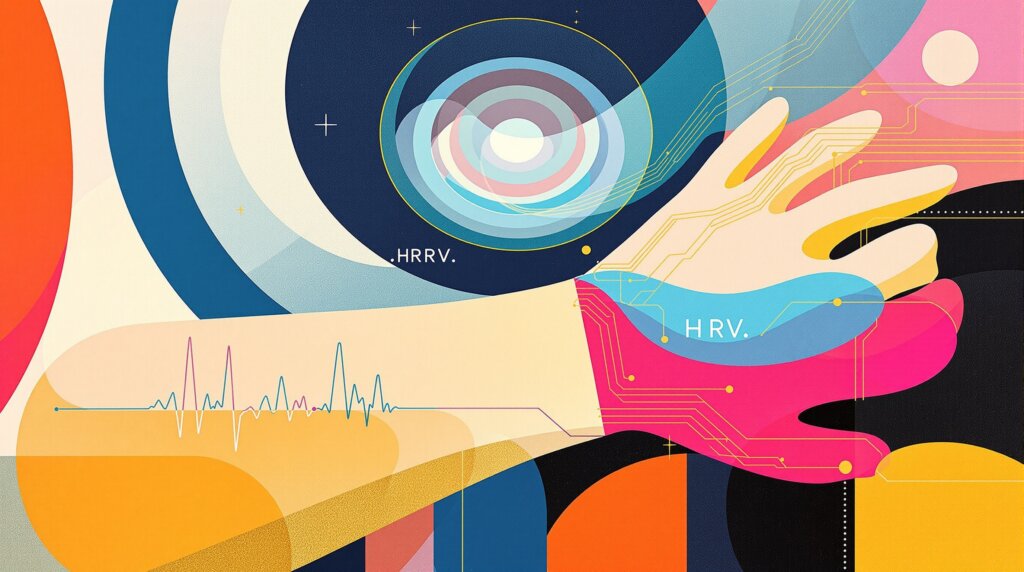The Intersection of Technology and Self-Optimization
Understanding the Biohacking Movement
Biohacking represents a growing movement of individuals using data-driven approaches to optimize their health, wellness, and performance through strategic lifestyle modifications and technological tools. At its core, biohacking is about taking control of your biology—using scientific methods and continuous monitoring to understand how your body responds to different interventions. While the term may sound futuristic, the principles are often grounded in fundamental health practices like sleep optimization, stress management, and recovery protocols.
Health bands have emerged as essential instruments in this self-optimization journey, providing continuous biometric monitoring that creates valuable feedback loops for personalized health interventions. These wearable devices transform abstract concepts like “feeling better” into concrete, measurable data points that can guide meaningful lifestyle adjustments. However, it’s worth noting that effective biohacking isn’t just about collecting data—it’s about interpreting that information wisely and making sustainable changes that enhance long-term health outcomes.

The Technology Behind Modern Health Monitoring
Advanced Sensors in Compact Devices
Today’s health bands represent sophisticated pieces of technology that pack multiple sensors into sleek, wearable formats. These devices typically monitor heart rate through photoplethysmography—a technique that uses light to detect blood volume changes in your capillaries. Advanced accelerometers track movement patterns and sleep stages, while temperature sensors provide insights into recovery and potential illness onset.
One of the most valuable metrics tracked by modern health bands is heart rate variability (HRV), which measures the subtle variations in time between heartbeats. This data often serves as a window into your autonomic nervous system’s balance, indicating how well your body is managing stress and recovering from physical demands. Higher HRV generally suggests better cardiovascular health and stress resilience, though individual baselines can vary significantly.
Beyond basic vitals, many health bands now monitor oxygen saturation levels, which can be particularly useful for athletes training at altitude or individuals concerned about respiratory health. Some advanced models even track skin conductance for stress analysis and provide detailed sleep architecture breakdowns that weren’t previously available outside of clinical sleep studies. The accuracy of these sensors has improved considerably, though they’re not always perfectly reliable and should complement, rather than replace, professional medical monitoring when health concerns arise.
Optimizing Performance Through Continuous Data
Creating Personalized Health Interventions
The real power of health bands in biohacking lies in their ability to provide continuous monitoring that enables personalized optimization strategies. Unlike traditional health assessments that offer only snapshots in time, these devices create ongoing narratives about how your body responds to different lifestyle variables. This continuous feedback loop allows biohackers to experiment systematically with diet, exercise timing, sleep schedules, and recovery protocols.
Sleep optimization often becomes a primary focus for many users, as quality rest fundamentally impacts cognitive function, physical recovery, and overall performance. Health bands can reveal patterns showing how late meals, screen time, or room temperature affect your sleep architecture. While these insights are valuable, it’s important to remember that sleep improvement sometimes requires addressing underlying issues that technology alone cannot solve.
HRV monitoring has become particularly popular among athletes and performance-focused individuals because it can indicate when the body is ready for intense training versus when it needs recovery. A declining HRV trend may suggest overtraining or excessive stress, prompting adjustments to workout intensity or stress management practices. However, HRV can be influenced by many factors, and individual responses aren’t always predictable.
For athletic performance, health bands provide real-time feedback that can help optimize endurance, strength training, and injury prevention strategies. The data enables users to identify their optimal training zones, understand recovery patterns, and make evidence-based decisions about when to push harder or scale back. This approach tends to be more effective than generic training programs because it accounts for individual physiological responses and life circumstances.
Advanced Biohacking Applications
Emerging Metrics and Integration Possibilities
Modern health bands are increasingly incorporating advanced metrics that were once limited to clinical settings. Some devices now estimate VO2 max—a measure of cardiovascular fitness—while others provide basic EKG readings or blood pressure monitoring capabilities. These features represent significant technological advancement, though the accuracy can vary and may not always match clinical-grade equipment.
The integration potential with other biohacking tools creates compelling possibilities for comprehensive health monitoring. Health bands can work alongside continuous glucose monitors to provide metabolic insights, or complement breath analyzers that track ketone levels during dietary experiments. Some biohackers combine wearable data with technologies like PEMF therapy or brainwave monitoring devices to create holistic optimization protocols.
Perhaps most importantly, artificial intelligence and advanced analytics are making health band data more actionable than ever before. Rather than simply presenting raw numbers, modern platforms can identify patterns, suggest interventions, and track the effectiveness of different strategies over time. This personalized coaching approach helps users navigate the complexity of biohacking without becoming overwhelmed by data.
The blēo platform exemplifies this evolution toward intelligent health monitoring, combining medical-grade sensors with personalized AI coaching that focuses on longevity signals rather than just basic activity metrics. This approach emphasizes sustainable, stress-free improvements based on meaningful health indicators like biological age markers and deep sleep quality.
Navigating Limitations and Challenges
Understanding the Boundaries of Wearable Technology
While health bands offer tremendous value for biohacking enthusiasts, they’re not without limitations that users should understand. Sensor accuracy can vary significantly between devices and individuals, and factors like skin tone, tattoos, or device placement can affect data quality. Environmental conditions, movement artifacts, and individual physiological differences sometimes create inconsistencies that require careful interpretation.
Privacy and data security represent growing concerns as these devices collect increasingly detailed personal health information. Users should be aware of how their data is stored, shared, and potentially used by manufacturers or third parties. The permanent nature of biometric data makes these privacy considerations particularly important for long-term users.
Data overload presents another challenge, as the constant stream of metrics can become overwhelming without proper guidance. Some users develop anxiety around their health numbers or make unnecessary lifestyle changes based on short-term data fluctuations. It’s crucial to remember that health bands are supportive tools for wellness optimization, not diagnostic devices capable of detecting complex medical conditions.
Effective biohacking with health bands requires patience and scientific thinking—looking for trends over time rather than reacting to daily variations. The most successful users tend to focus on a few key metrics initially, gradually expanding their monitoring as they develop better data interpretation skills.
The Future of Biohacking Technology
Emerging Trends and Possibilities
The future of health bands in biohacking points toward increasingly sophisticated multi-modal sensing capabilities that integrate metabolic, neurological, and cardiovascular data into comprehensive health profiles. We’re likely to see continued advancement in sensor accuracy, battery life, and the seamless integration of multiple health monitoring technologies.
Personalized medicine represents a particularly exciting frontier, where continuous health band data could inform precision interventions tailored to individual genetic profiles and lifestyle factors. This evolution may transform biohacking from a largely experimental practice into a more scientifically validated approach to health optimization.
The expanding ecosystem of recovery technologies and digital therapeutics will likely complement traditional health bands, creating integrated platforms that can recommend and track interventions across multiple health domains. However, the focus must remain on making these technologies accessible, affordable, and scientifically validated to ensure broad adoption and real health benefits.
Conclusion: Technology as a Tool for Sustainable Optimization
Health bands have become pivotal enablers in the biohacking movement, providing the continuous data streams necessary for evidence-based health optimization. Their ability to transform lifestyle interventions from guesswork into data-driven experiments represents a fundamental shift toward more personalized and effective wellness strategies. However, the true value lies not in the technology itself, but in how thoughtfully we integrate wearable insights with sustainable lifestyle adjustments.
As this field continues evolving, the balance between innovation and practical application will be crucial. The most successful biohacking approaches tend to emphasize consistency over complexity, focusing on fundamental health principles enhanced by technological insights rather than being driven purely by data. With continued advancement in accuracy, accessibility, and privacy protection, health bands will likely remain essential tools for anyone serious about optimizing their health and performance in the years ahead.
Frequently Asked Questions
Can a health band help me with biohacking to improve performance?
How accurate are health bands for tracking important health metrics?
Can a health band detect early signs of illness or overtraining?
Which sensors should I look for in a health band focused on longevity and performance?
Are my health data on bands safe and private?



